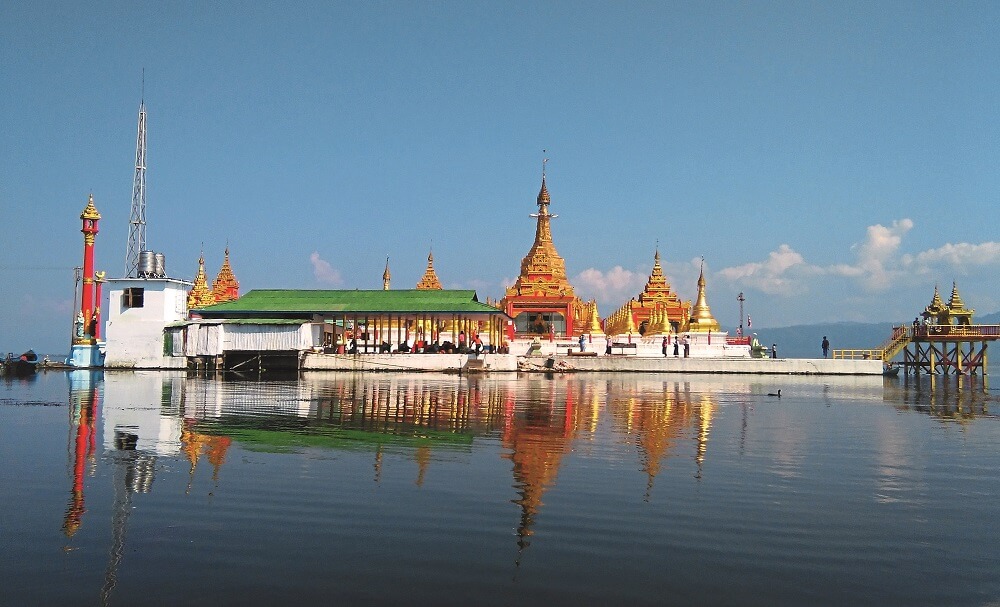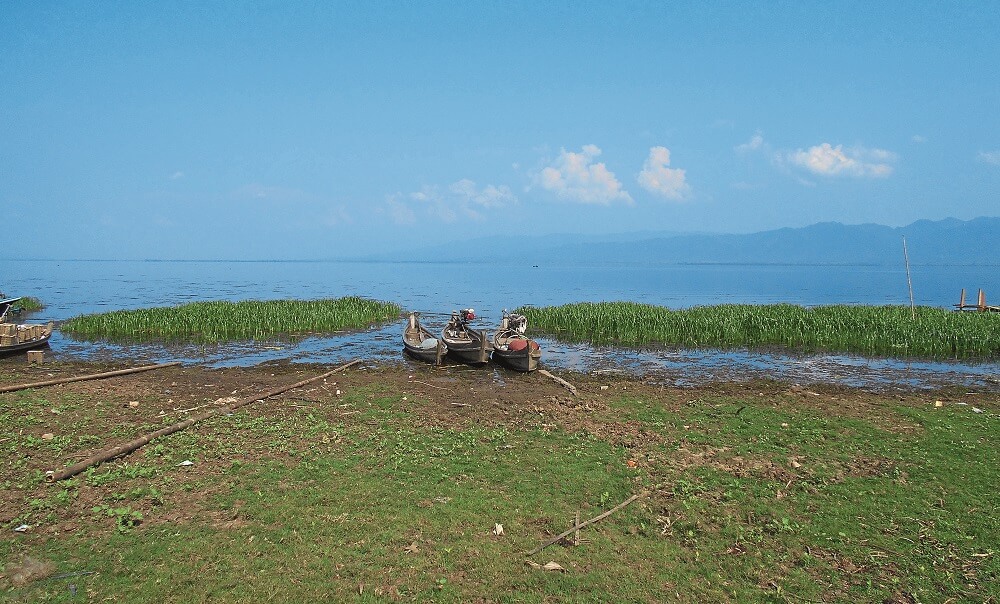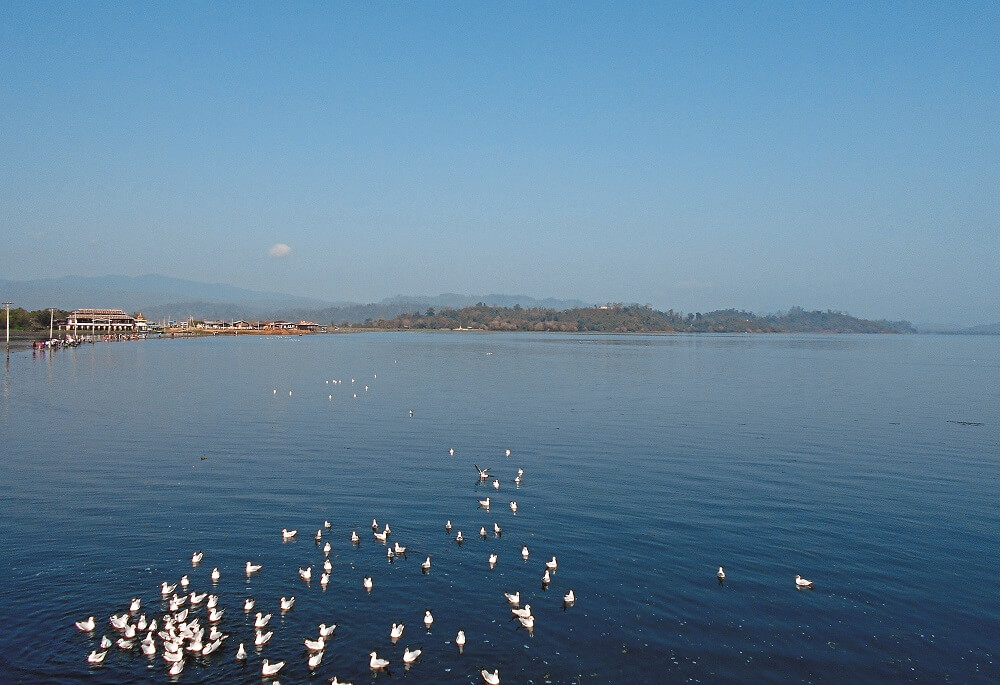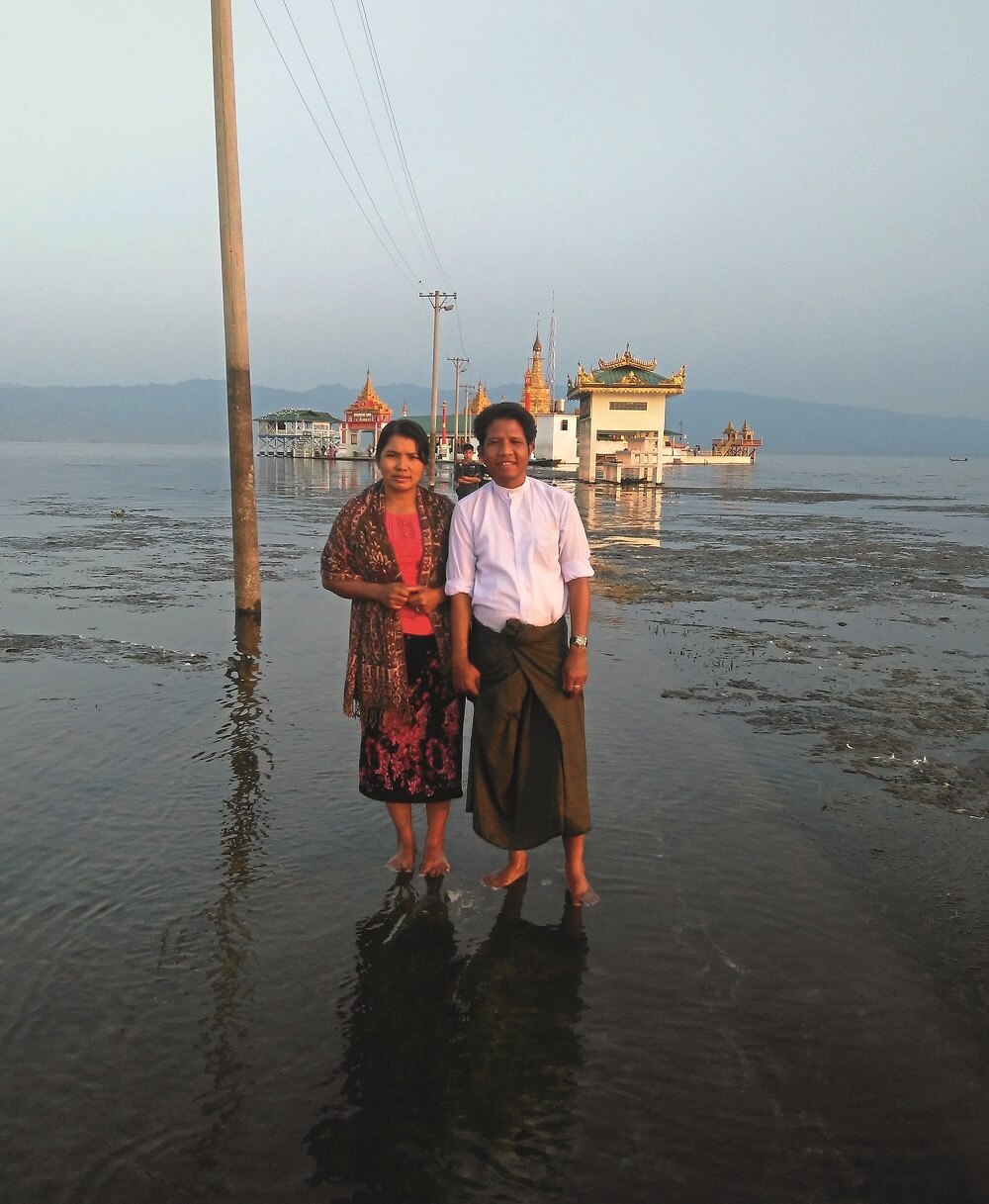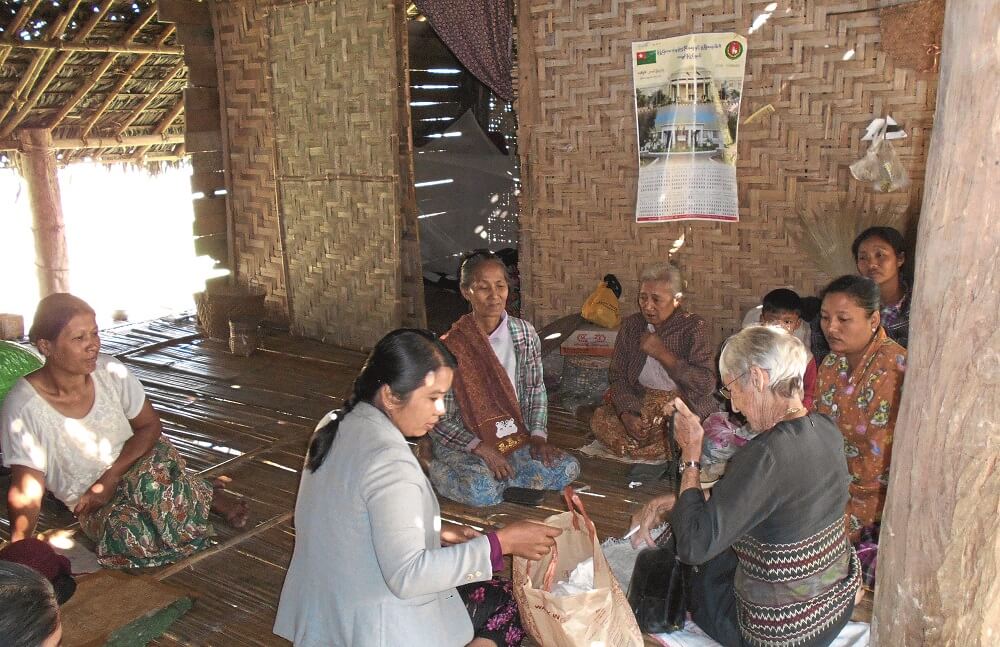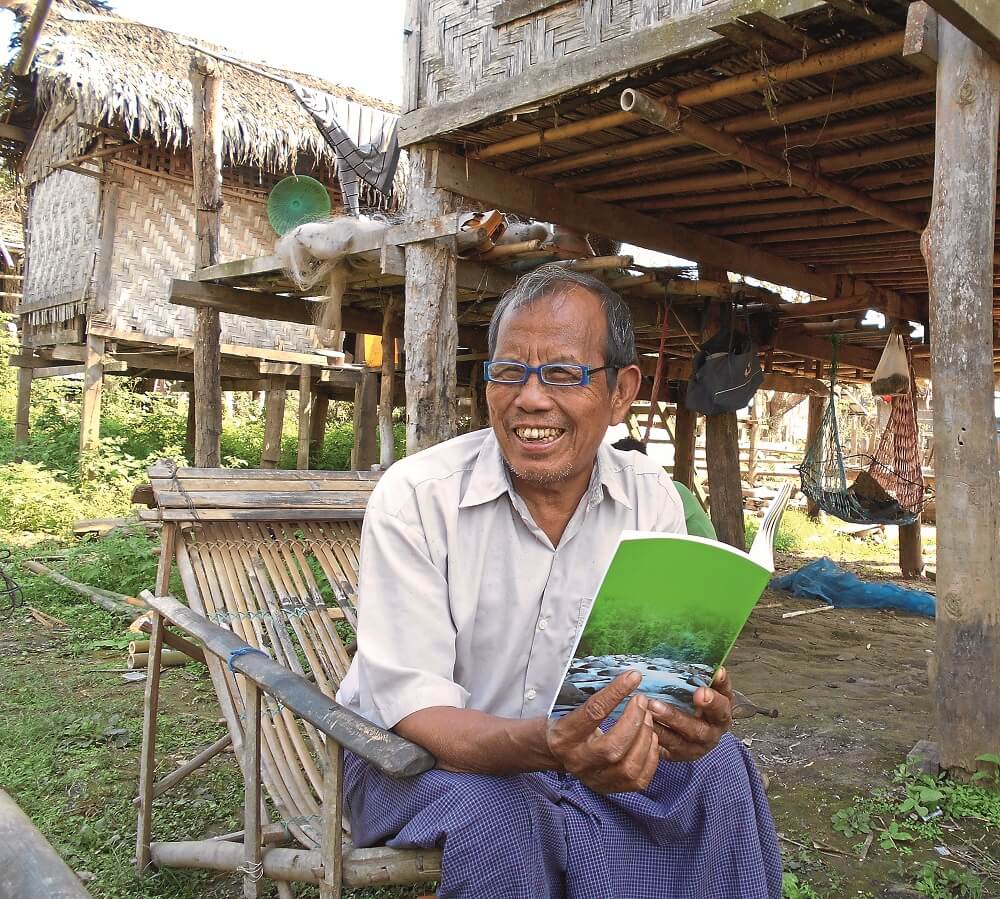Journey to scenic Indawgyi Lake in Kachin State, Myanmar with travel writer Judyth Gregory-Smith as she explores the surroundings, meets the villagers, and, with the eagerly welcomed distribution of used eyeglasses, brings clearer vision to people in need.
Are we there yet? I didn’t share the question with Win San and Saya Htay, who were travelling with me as it was just as long a journey for them as it was for me. And it was long – nine hours long. We left Monywa in Sagaing Division of Upper Myanmar to travel to Indawgyi Lake in Kachin State near China. Why? Because this is an area of exceptional beauty: mountains as well as lake and owing to its remoteness, it has not been explored by many visitors.
The road was mostly good, but the bridge crossings were not. In February, they were preparing for the rainy season, and had broken down most of the bridges to make them bigger! Would we have to get out and push crossed my mind several times. One truck ‘fell down in the river’ we were told, which proved a diversion while they pulled it out.
Indawgyi Lake is 25 kilometres long and 12 kilometres across and is 750 metres above sea level. The lake and surroundings have not been developed. There are no shops or hotels. The choice of accommodation is a concrete government rest house which has a room with an inside bathroom, or Indaw Mahar Guesthouse, Lonton.We opted for the latter. It had 24-hour electricity, which only went off for an hour or two at a time.
From the Guesthouse, I gazed across the huge blue expanse of water. A cormorant was on a post hoping a fish would swim by, as was a kingfisher with a long red bill. Gulls were wheeling over boats taking local people to Shwe Min Zu Pagoda, which is in the middle of the lake. Around the edges there is Water Hyacinth, which is a scourge in many parts of the world as it is invasive and prolific and clogs up waterways – but here it just occurs around the edges. unusual than others.
Apparently in 184 BCE, which was the time of the dragons, there was no lake. Later there grew a village of 10,000 houses. But the villagers were not Shan or Kachin, they were Ta Man Ti or magic people. They wore a blanket and if they took it off, it could be seen that they were half tiger and half human. They had no religion, no rules and no laws.
In another detail of the story we learned that there was just one Buddhist woman: widow Daw Aye Moan and one night she was visited by a good nat in a dream. It is rare to hear of a good nat. Nats are part of Myanmar’s spirit world. They are the spirits of people who usually came to a sticky end and therefore want to make trouble for people still living. There are 37 main nats. There is one for each village or town, one for each profession or job. In some places there may be a nat for each house. The spirit world of nats is as alive to the Myanmar people as is the Buddha and his teaching.
The good nat told widow Daw Aye Moan that everyone in the village must leave within a week otherwise they would die. Daw Aye Moan spent every day giving this message to the villagers. But nobody believed her. Eventually, she knew she must leave, so she did, taking her two children and two buffaloes with her. She climbed a mountain to be safe and when she looked next morning the huge lake, now known as Indawgyi, covered the entire area. All the houses in the villages were submerged and all the people drowned.
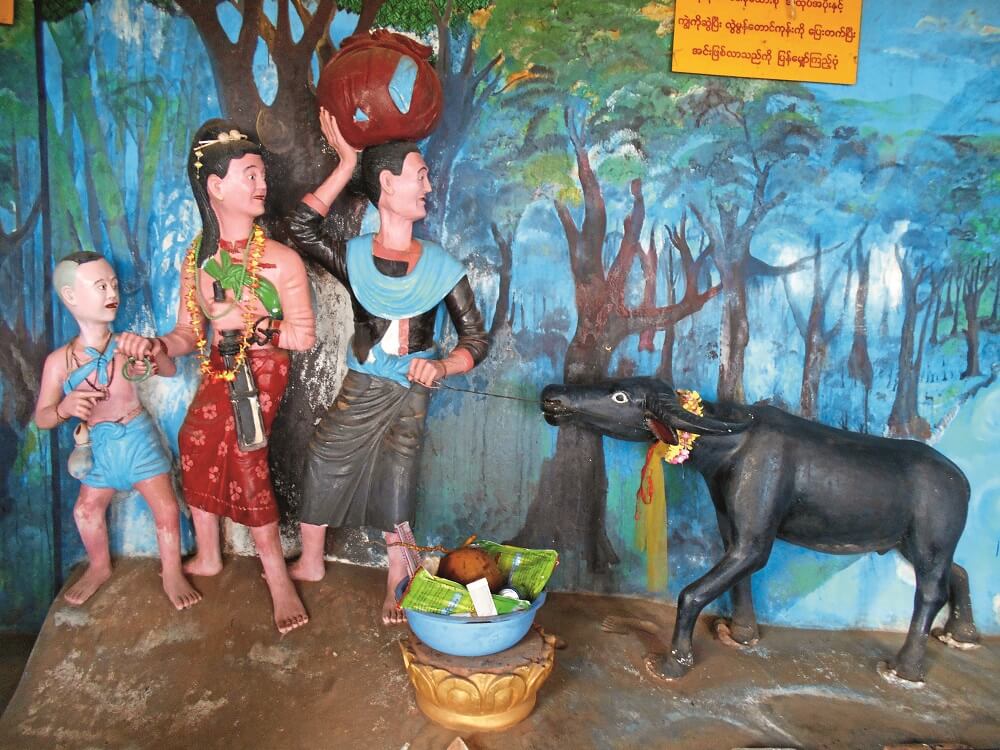
Apparently, when Daw Aye Moan escaped up the mountain, called Low Mon, only one of the two buffaloes made it to the top with her. The smaller of the two drowned. We visited the spot where one huge boulder contained the footprint of the buffalo that drowned and next to it the footprint of Daw Aye Moan. All her life, the widow wanted to build a pagoda according to her faith, so the Sayadaw or Abbot of the Lwei Monastery organized the building of a pagoda for her at Mohnyine.
Discovery in the detail
We learned that the lake has three levels. The bottom is where the dragons lived (a long time ago) then there is the submerged village level, and now the lake, which has the pagoda Shwe Min Zu in the centre. We walked to the Pagoda first by road and then for half a kilometre on a causeway, which is under water in the rainy season as the water level rises by two or more metres and can only be reached by boat. Fortunately, in February, it was only ankle deep and we walked, admiring the view as we did so.
The pagoda is interesting for more than one reason. First, it is owned by two villages, side-by-side, so neither can say the whole pagoda belongs to them. In November and December every year, the water on the left side of the pagoda remains blue, but the water on the right side turns red.
Further enquiries on my part revealed that it was a bad nat that does this. The red, I was told, is a sort of ‘medicine’ and all the fish on the right side die. The fishermen are pleased, because it is easier to catch dead fish than ones that are still alive!
The village of Longton is a quiet place where people were mostly fishermen, and farmers who grew rice and vegetables. It had only one sealed road and the only noise was the coming and going of trucks filled with full and then empty oil drums.
The trucks carried gasoline to supply the huge jade industry at nearby Pakhang. It didn’t seem that money from jade (or anything else) made its way to the villages. Most had no electricity, running water or even a road leading to them.
Win San made enquiries as to which were the poorest villages and we set off to see who needed glasses. The idea came from a previous year when I asked Saya Htay if there was anyone in her village who could make use of my old spectacles. After this, every time I met her she thanked me on behalf of her uncle. He had been unable to read for five years and now, with the glasses, he could. Win San told me there would be hundreds of villagers in Myanmar who needed glasses, but had no money for clinics, doctors or opticians. I put out a request to friends, clubs, and organisations to donate any no-longerused glasses for us to give away.
One of the poorest villages was Nang Pown Zin. The village is remote and being several kilometres from the only sealed road in Longton. The villagers subsist on fishing and they are able to grow only one crop of rice per year. They did have one or two pigs and chickens and a cow.
The gift of better vision
Two little girls told us of Daw Town who is a widow aged 75 who lives alone in a flimsy house despite the cold of this area (night and morning). It had an outside staircase that was almost my downfall. Daw Town was surprised to learn we had glasses to give away. One by one she tried them until she found the right ones. She was pleased to look around her house and see more than before. Then Saya Htay passed her a pamphlet from the pagoda. Her face lit up. She had not been able to read for over five years and was delighted at the chance of making her life more interesting.
A man appeared. U Than Shwe worked at the pagoda and told us his bookkeeping required reading and writing. He had not been able to read for four years and knew the glasses would help his job considerably. Then Daw Man Yon arrived. She was a teacher with problems of constantly weeping eyes. She had no money to go to the clinic or hospital so could we help her? In addition to her everyday teaching job she taught adults Sanskrit in the evenings. So her glasses would help many people.
The village next to Indaw Mahar Guesthouse is also incredibly poor relying on fish for food. Some young men were pleased with the tee shirts we carried and as news of the glasses spread a man tried some and a huge grin spread across his face when he found the glasses that gave him back reading. The final pair of glasses went to a woman. Yes, she could see around much better with the glasses. But she had no education, she told us, and could not read. Even the glasses could not fix this!
Indawgyi Lake is not the place to go if you like huge hotels, smart shopping malls, and super service. It is the place to go if you enjoy kayaking, cycling, walking, and visiting local people in their villages. And please don’t forget to take your no-longer-used glasses.
Judyth Gregory-Smith, nature and travel writer, is the author of Myanmar: a Memoir of Loss and Recovery;
Sulawesi: Ujung Pandang to Kendari; Southeast Sulawesi – Islands of Surprises.
This article was originally published in The Expat magazine (December 2016), which is available online or in print via a free subscription.
"ExpatGo welcomes and encourages comments, input, and divergent opinions. However, we kindly request that you use suitable language in your comments, and refrain from any sort of personal attack, hate speech, or disparaging rhetoric. Comments not in line with this are subject to removal from the site. "


